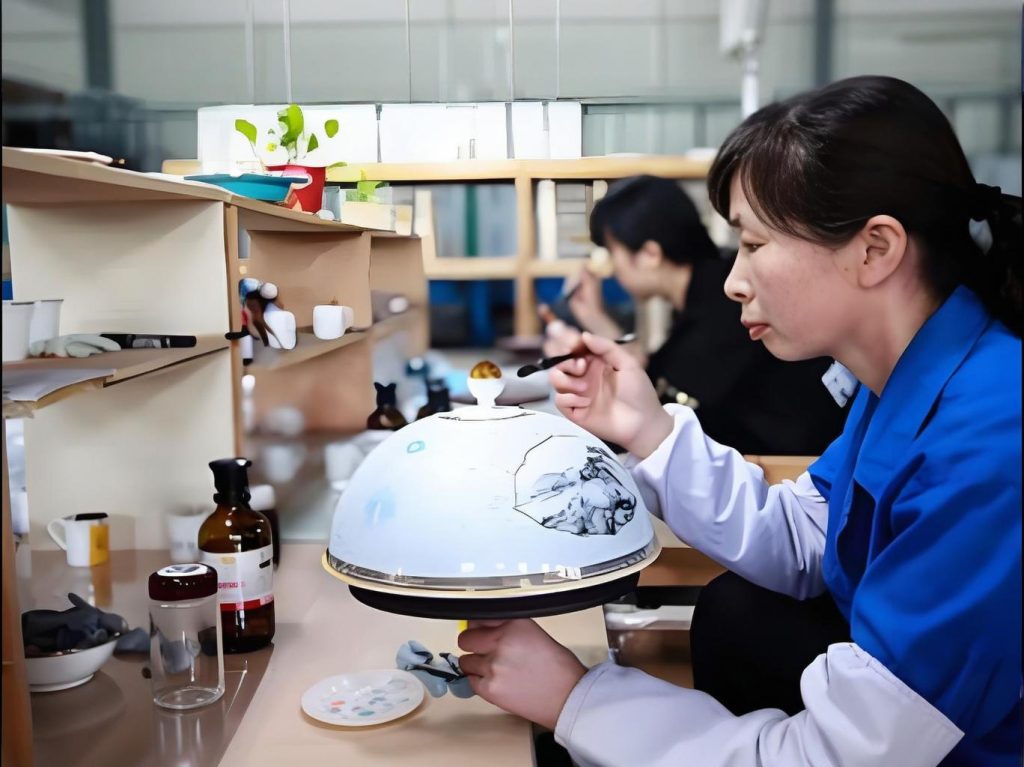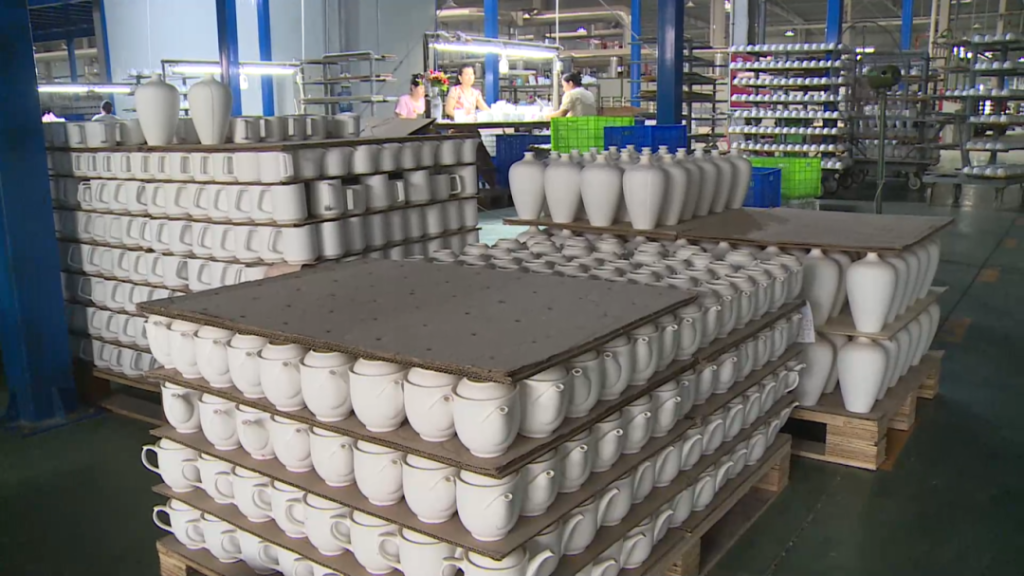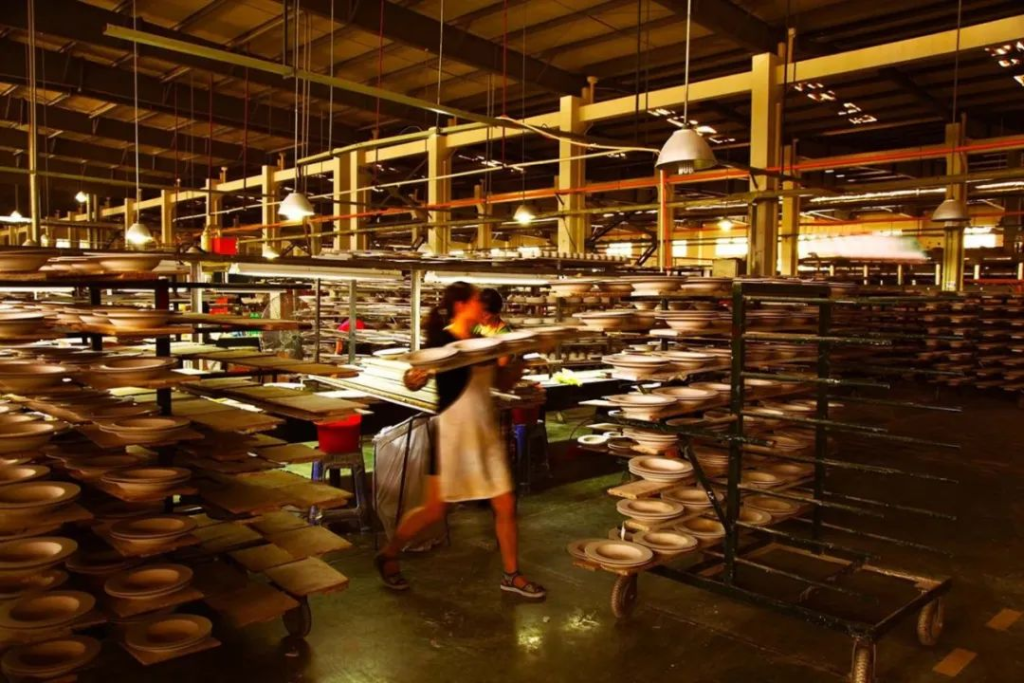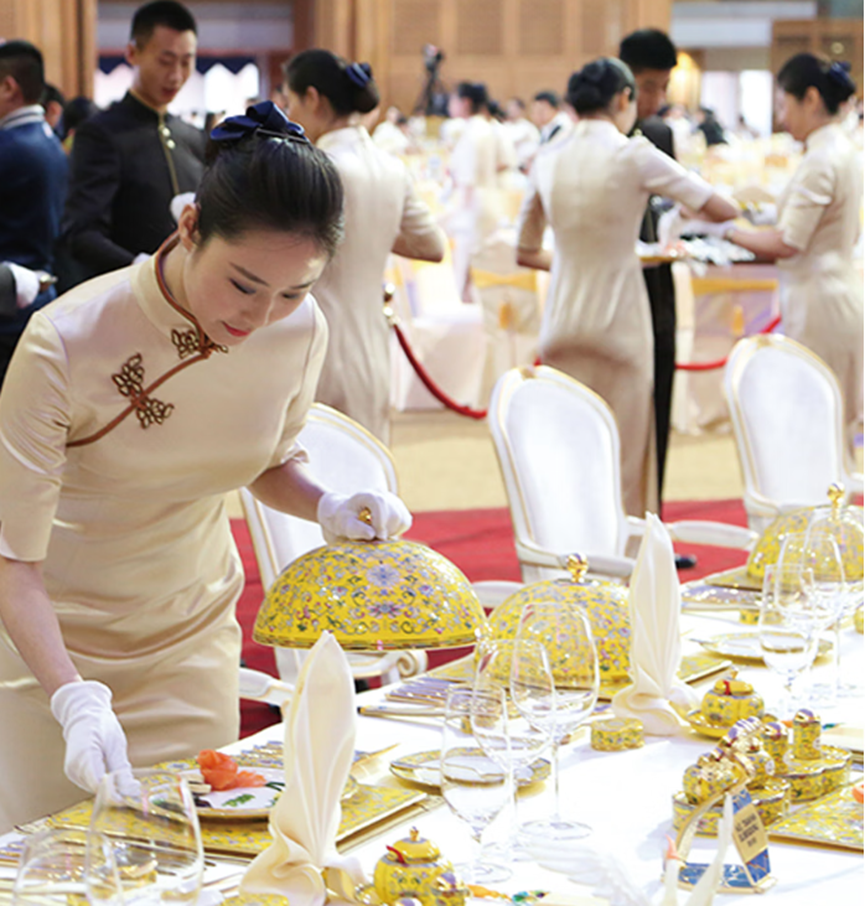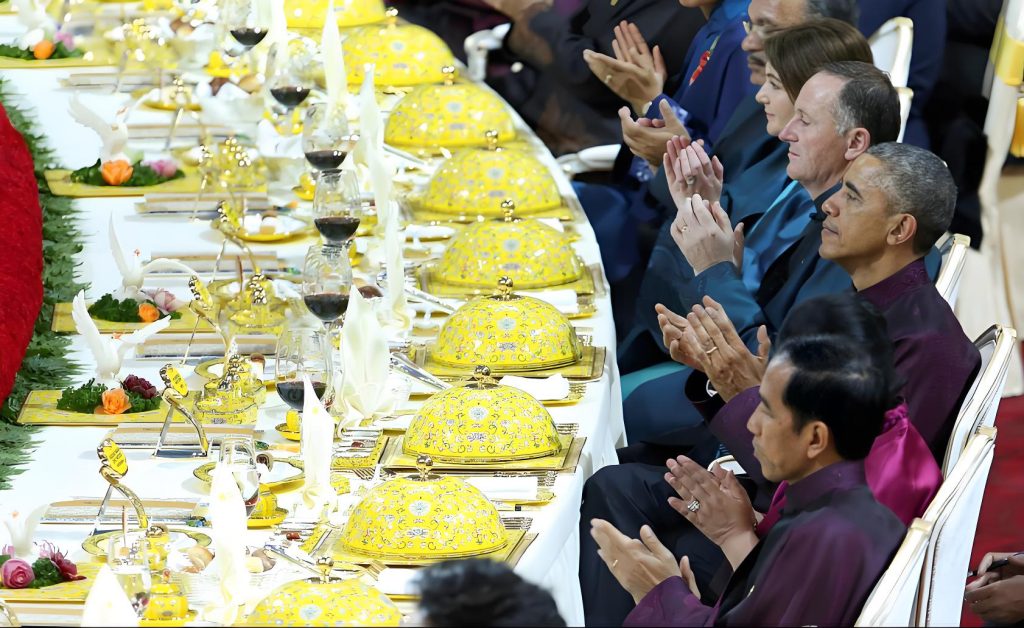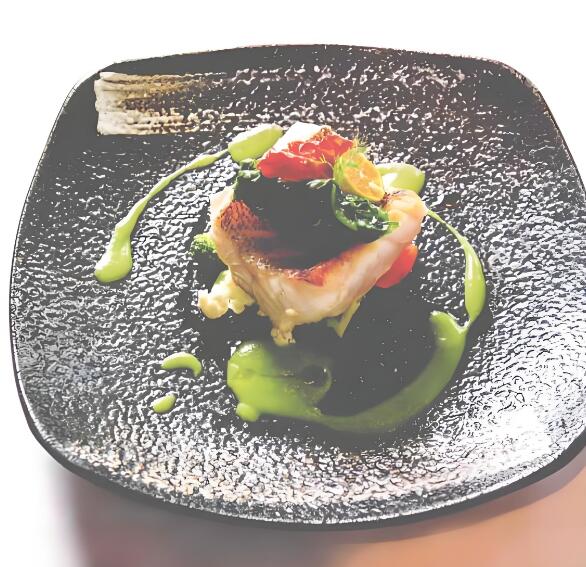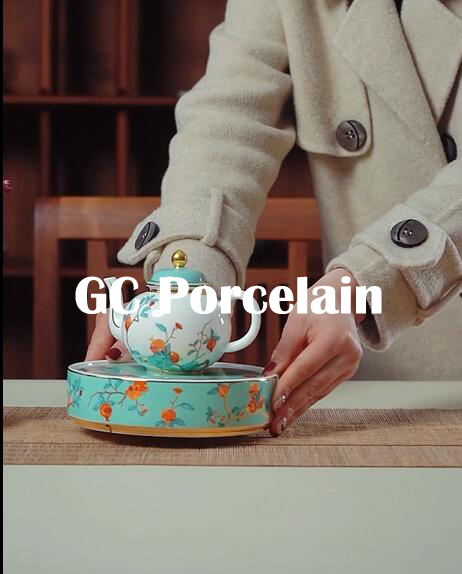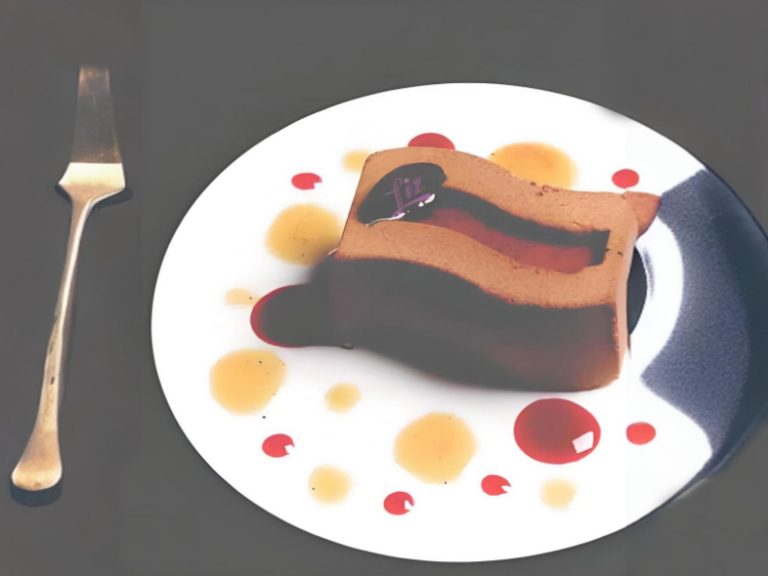The history, types, production process, and tasting guide of white tea
White tea is one of the six major types of tea in China. Its appearance is elegant, with plump, robust buds and leaves that are tender and rise in a wavy pattern. The edges of the leaves curl downward, and the buds and leaves are connected with the stems and intact. The color is not as green as green tea, not as deep red as black tea, and not as purplish-brown as oolong tea, but presents a silvery-green hue. This is because its surface is covered with white hairs, giving it a white, silvery appearance, and thus it has the aesthetic of ‘white makeup on a green background,’ hence the name ‘white tea.’
There are two types of white tea: one refers to tea made from fresh leaves of white tea trees, processed using the method for green tea. It is named for its naturally white buds and leaves and does not undergo withering, belonging to the green tea category of ‘white tea.’ The other refers to tea made from fresh leaves of ordinary tea trees, using natural withering, slight fermentation, no rolling or frying, and natural drying or gentle roasting methods. This is the slightly fermented white tea mainly introduced in this text.
White tea is a specialty of China and is a renowned treasure in the world of tea, known as a rare and valuable historical tea, often called the ‘living fossil of tea.’ It has had many beautiful names in the past, such as Ruinyun Xianglong, Longguo Shengxue, and Xueya. It was included in tribute teas during the Song Dynasty and has a long history. The elegant and fragrant name has been around for more than 880 years. The production of white tea also has a history of about 200 years, with the earliest creation attributed to Fuding County.
Varieties
In the past, white tea was classified based on the different tea tree varieties: Dabai (from Dabai tea trees), Shuixianbai (from Shuixian tea trees), and Xiaobai (from Caicha tea trees). Additionally, depending on the picking standards, single buds of Dabai tea were made into “Silver Needle” (also known as Baihao Yinzhen), young shoots and leaves were made into “White Peony,” and leaves were made into “Shoumei.” Currently, white tea is mainly divided into Baihao Yinzhen, White Peony, Shoumei, and New Craft White Tea.
Origin
Currently, the main production areas for white tea are in Fujian Province (with a small amount produced in Taiwan), including counties such as Jianyang, Fuding, Zhenghe, and Songxi. However, only Taimu Mountain in Fuding is the original production area of white tea.
Tasting
White tea can be brewed using teacups, tea bowls, or teapots, without much emphasis on specific tea utensils. However, using Gongfu tea tools and methods can yield better results. White tea should not be brewed too strong; generally, five grams of tea leaves are enough for a 150 ml cup. There is no fixed format for brewing; typically, 95°C or higher water is added, and the tea can be enjoyed after about five minutes. At this time, the tea soup appears apricot yellow, clear and bright, with the leaf base showing light gray-green and slightly red leaf veins. The taste is fresh and mellow, the aroma rich, with a sweet aftertaste and lingering fragrance. It is generally recommended to brew a cup of white tea three times.
Note: White tea is cool in nature. For those with “hot” stomachs, it can be consumed on an empty stomach; for those with neutral stomachs, it can be consumed at any time; for those with “cold” stomachs, it should be consumed after meals. Generally, white tea does not irritate the stomach. A daily intake of five grams is sufficient for most people, with even less recommended for the elderly.
Health Benefits
White tea has the most comprehensive health benefits among all teas. In addition to its functions of anti-radiation, anti-oxidation, anti-tumor, lowering blood pressure, lowering blood lipids, lowering blood sugar, and preventing cancer, due to its cool nature, regular consumption of white tea can also help reduce fever, relieve summer heat, and clear fire.
Production
White tea is made from the fine, tender buds and leaves of excellent Dabai tea varieties.
In ancient times, white tea was made by first picking the buds that sprouted in the spring, plucking them by hand when the scales and fish leaves spread, washing them in water (called “water buds”), then removing the scales and fish leaves, sorting, and steaming and drying them.
Nowadays, the process is much simpler, using only the plump, furry buds, called “drawn needles,” to make the tea. The production process of white tea is very special and the most natural method. After picking the tea leaves, they are not subject to any pan-frying or kneading, unlike green tea which stops polyphenol oxidation, or black tea which promotes it. Instead, the freshly picked tea leaves undergo slight fermentation of about 10% to 30%, spread thinly on bamboo mats under weak sunlight or in a well-ventilated indoor area for natural withering. When dried to 70-80%, they are roasted with gentle heat until fully dry, using the fire fragrance to complement the tea aroma, and packed while still hot when the moisture content is 4% to 5%.
The production process generally consists of two steps: withering and drying, with withering being the key. The purpose of withering is to remove moisture and induce a series of spontaneous biochemical changes, initially promoting and later inhibiting these changes, also aiding in drying. Withering can be done indoors or outdoors. In spring and autumn sunny days or clear summer days without intense heat, indoor or compound withering is preferred. External conditions affecting the speed of withering include temperature, humidity, and air circulation. Higher temperature, lower humidity, and greater wind speed result in shorter withering time, and vice versa. Therefore, it is important to adapt to local conditions and flexibly manage the process.
The unique feature of white tea production is that it neither destroys enzyme activity nor promotes oxidation, while maintaining the distinctive aroma of the tea buds. Due to its simple production process with minimal steps, white tea largely retains the nutritional components of the tea leaves.
| Tips | Source |
|---|---|
| White tea is rich in antioxidants such as catechins and polyphenols, which help combat free radical damage. | National Institutes of Health (NIH) |
| White tea contains a small amount of caffeine, about 15-30 mg per cup, less than green and black tea. | Journal of Food Science |
| White tea helps boost the immune system and promotes health. | Harvard Medical School |
| White tea is beneficial for the skin, improving complexion and reducing wrinkles. | Mayo Clinic |
| White tea contains the amino acid L-theanine, which has relaxing and stress-reducing effects. | University of California, Davis |
| White tea undergoes minimal processing, retaining the most natural nutrients. | American Journal of Clinical Nutrition |
| White tea has antibacterial and antiviral properties, helping to prevent infections. | National Center for Biotechnology Information (NCBI) |
| White tea helps lower blood pressure and improve cardiovascular health. | American Heart Association |
| White tea can boost metabolism and aid in weight loss. | British Journal of Nutrition |
| White tea has bone-protecting properties, reducing the risk of osteoporosis. | Osteoporosis International |
Baihao Yinzhen
Baihao Yinzhen belongs to the white tea category, which is a lightly fermented tea. It is the highest grade of white tea, also known as Baihao or Baihao Yinzhen, and is praised as the “beauty in tea” and “king of tea,” a famous historical tea. In the past, it was made only from the new buds of tea trees in spring, making it very rare and precious. In 1982, it was rated as a national famous tea by the Ministry of Commerce, ranking second among the 30 famous teas. Baihao Yinzhen is also considered a treasure overseas.
Baihao Yinzhen has a beautiful appearance, with tea buds about three centimeters long, plump buds covered with white fuzz, standing straight like needles, and a shiny white color that is dazzling and pleasing to the eye. Due to different production areas and tea tree varieties, it is divided into Beilu Yinzhen and Nanlu Yinzhen. Beilu Yinzhen is produced in Fuding, Fujian, and the tea tree variety is Fuding Dabai Tea (also known as Fuding Baihao). Nanlu Yinzhen is produced in Zhenghe, Fujian, and the tea tree variety is Zhenghe Dabai Tea, which is less shiny than Beilu Yinzhen.
Production
Baihao Yinzhen was first produced in 1889. The picking standard for its raw materials is to harvest the spring tea buds when they are one bud and one leaf. After picking, the “needle extraction” method is used, which is unique and simple. The production process does not involve frying or rolling, only withering and baking. The main steps are withering and drying, allowing the tea buds to change naturally and slowly, forming its unique quality style.
Tea Art
The brewing method of Baihao Yinzhen is similar to that of green tea, but since it is not rolled, the tea juice is not easily extracted, so the brewing time should be longer. Generally, three grams of Yinzhen is placed in a colorless transparent glass that has been rinsed with boiling water, then 200 milliliters of boiling water is poured in. Initially, the tea buds float on the surface of the water. After 5 to 6 minutes, some of the tea buds sink to the bottom of the cup while others remain suspended in the upper part of the tea soup, standing upright and interspersed, creating a magnificent sight like stalactites.
After about ten minutes, the tea soup turns apricot yellow. At this time, the aroma is fresh and pleasant. Tasting it, the flavor is mellow and sweet, washing away the mundane, and full of interest. Baihao Yinzhen is very suitable for tea art performances. Here we introduce the “Baihao Yinzhen Tea Art,” a set of literati tea arts, which, like Zen tea arts, has its flavor and is equally difficult to understand.
Health Benefits
Baihao Yinzhen has a warm taste and a cool nature, with effects of invigorating the stomach and refreshing the mind, removing dampness and reducing heat, and is often used medicinally. It has the functions of lowering virtual fire and detoxifying evil toxins. Regular drinking can prevent diseases and improve immunity. It can even be said that drinking a cup of Baihao Yinzhen can have a calming and soothing effect on the mental tension caused by many harsh realities of today’s life. In North China, it is considered a good medicine for treating and caring for measles patients.
White Peony
White Peony belongs to the white tea category and is considered the “favorite” among white teas, a specialty of Fujian. The production areas are distributed in counties such as Zhenghe, Jianyang, Songxi, and Fuding in Fujian. White Peony was first produced in 1922, originally from Taihu. In 1922, Zhenghe began producing it and is its main production area. It is named White Peony because of its silver-white fuzz and green leaves, resembling a flower bud when brewed, with green leaves supporting the bud like a newly blooming flower bud. White Peony is made from one bud and one leaf or one bud and two leaves of new shoots from Dabai tea trees or Shuixian varieties, making it a superior quality white tea.
The characteristics of White Peony are: two leaves embracing one bud, forming a “heart shape,” with a natural leaf shape, gray-green or dark moss color, plump and tender leaves with wavy bulges, covered with white fuzz on the back, slightly curled leaf edges towards the back, and buds and leaves connected. The brewed tea has a clear and slightly sweet taste, fresh and lasting fuzz aroma, bright apricot yellow soup color, tender and even leaves, slightly red leaf veins, embedded in green leaves, praised as “red dress with white wrapping.” It has the effect of moistening the lungs and clearing heat and is often used medicinally.
The raw materials for making White Peony come from tea tree varieties such as Fuding Dabai Tea, Fuding Daho Tea, Gelao, and Zhenghe Dabai Tea. In some places, a small amount of Shuixian tea is also used. Generally, White Peony made from the fresh leaves of Fuding Dabai Tea, Fuding Daho Tea, and Gelao tea trees is called Fuding White Peony, abbreviated as “Fuding Dabai (Tea).” White Peony made from the fresh leaves of Zhenghe Dabai Tea is called “Zhenghe Dabai (Tea).”
The fresh leaf quality requirements for making White Peony are very high. The buds and leaves must be covered with white fuzz and be plump and tender. The traditional process of making White Peony requires the picking standard to be one bud and two leaves from the first flush of spring tea. The bud and the two leaves should be of equal length, and all three should be covered with white fuzz (also known as Baihao). The best season for White Peony raw materials is spring, as summer tea is too thin and not suitable for making. However, with good tea garden management, autumn tea often produces high-quality White Peony.
The production of White Peony does not involve frying or rolling, and although it only has two basic processes, withering and drying, the process is not easy to master. The best quality is achieved through indoor natural withering. The fresh leaves should be evenly spread thinly on a bamboo tray without overlapping. When withered to 70% dry, two trays are combined into one, and when 80-90% dry, combined into one again. When the fresh leaves have lost about 95% of their water, they are placed in a baking basket and dried at a temperature of 90-100°C. At this stage, it is called White Peony “Maocha.” “Maocha” must go through a refining process to become the finished product, usually involving manually picking out hard stems, yellow leaves, wax leaves, red leaves, and dark leaves, then drying at low temperature, mixing while hot, and packing. The baking temperature must be appropriate; too high will make the aroma less fresh and brisk, and too low will make the aroma flat. White Peony is generally divided into four grades.

Gongmei
Gongmei, also known as Shoumei, is the highest-yielding variety of white tea, accounting for more than half of the total white tea production. It is made from the buds and leaves of the Caicha tea tree. The raw tea made from the Caicha buds and leaves is called “Xiaobai,” to distinguish it from the “Dabai” raw tea made from the buds and leaves of the Fuding Dabai tea and Zhenghe Dabai tea trees. Usually, “Gongmei” indicates a superior quality, better than Shoumei. However, in recent years, it is generally referred to as Gongmei without exporting Shoumei products.
High-quality Gongmei finished tea has obvious white downy hairs, the dry tea is emerald green, and after brewing, the tea soup is orange or deep yellow. The leaf base is uniform, soft, and bright, with the main vein of the leaf appearing red when viewed against the light. The taste is mellow and refreshing, and the aroma is fresh and pure.
The main production area of Gongmei is Jianyang County, Fujian. It is also produced in counties such as Jian’ou and Pucheng. Gongmei was previously made using Caicha as raw material, but now it also uses the buds and leaves of the “Fuding Dabai Tea” or “Zhenghe Dabai Tea” trees. The fresh leaf raw materials should not have opposite leaves, and the picking standard is one bud with two leaves to one bud with two or three leaves. The quality is inferior to White Peony. The manufacturing process is basically the same as White Peony, so it will not be elaborated here. Gongmei is mainly sold in Hong Kong and Macau.
If you have any questions or need to custom dinnerware service, please contact our Email:info@gcporcelain.com for the most thoughtful support!



